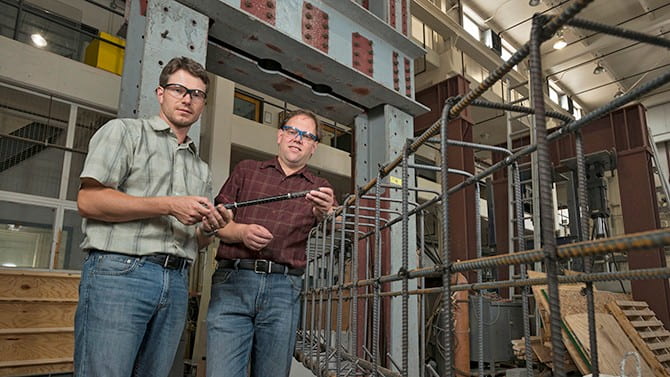Aging, deterioration and extreme events like earthquakes and hurricanes can take a toll on roads, bridges and other structures. With damage and defects often invisible, the search is on for systems that can monitor the health of structures and alert their owners to potential problems and even impending catastrophic failure.
Several years ago, Erik Thostenson and Thomas Schumacher, both affiliated faculty members in the University of Delaware’s Center for Composite Materials, began to explore the use of carbon nanotube composites as a kind of “smart skin” for structures.
Now, they have improved on this approach with the addition of another technique called electrical impedance tomography (EIT), which uses surface electrode measurements to create an image of the conductivity of a material or structure. While EIT has been used as a noninvasive medical imaging technique since the 1980s, it has largely been overlooked by the structural health monitoring community. (read more)
